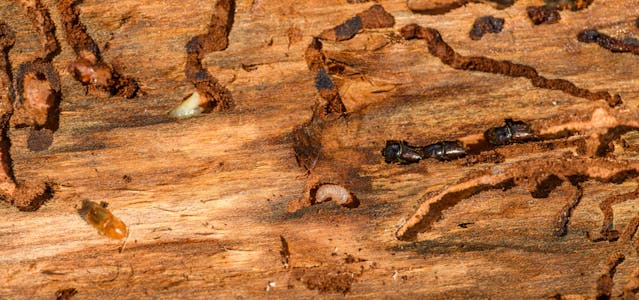
Termite infestations can wreak havoc on homes, causing extensive damage and costly repairs. However, by implementing effective termite control measures, homeowners can protect their properties from these destructive pests. In this comprehensive guide, we’ll walk you through the steps to effectively prevent and manage termite infestations, ensuring the long-term integrity of your home.
Understanding Termite Behavior
Before diving into termite control methods, it’s crucial to understand termite behavior. Termites are social insects that live in colonies and feed on wood, causing structural damage to buildings. They thrive in moist environments and typically build their nests underground or within the wooden structures of homes. By familiarizing yourself with termite habits and nesting preferences, you can identify potential infestation risks and take proactive measures to mitigate them.
Pre-Construction Soil Poisoning
One of the most effective methods of termite control is pre-construction soil poisoning. This involves treating the soil beneath and around the foundation of a building with specialized chemicals to create a barrier against termite infestation. Soil poisoning eliminates existing termite colonies and prevents new ones from forming, providing long-lasting protection for your home. It’s a crucial step in termite prevention, especially in areas where termite activity is prevalent.
Post-Construction Termite Prevention
Even after construction is complete, termite prevention efforts should continue. Reticulation systems are commonly used for long-term termite control. These systems consist of pipes installed around the perimeter of the building, through which termite-repellent chemicals can be injected. Reticulation systems provide ongoing protection against termite infestations and can be easily maintained and replenished as needed.
Baiting Systems
Baiting systems are another effective tool in termite control. These systems utilize bait stations strategically placed around the perimeter of a building to attract termites. Once termites consume the bait, they carry it back to the colony, effectively eliminating the entire population. Baiting systems are particularly useful for targeting termite colonies in hard-to-reach areas and can complement other termite control methods for comprehensive protection.
Water-Based Solutions
In addition to soil poisoning and baiting systems, water-based termite control products can be used to address infestations in existing structures. These products are applied directly to infested areas or injected into termite galleries to kill termites on contact. While water-based solutions can provide temporary relief from termite infestations, they may not offer long-term protection against reinfestation and are best used in conjunction with other termite control methods.
Localized Treatment Methods
When dealing with localized termite infestations, targeted treatment methods are essential for containing the spread of pests. Localized treatments involve applying termite control products directly to infested areas, such as wooden beams, walls, or furniture. This approach helps minimize damage and prevents termites from spreading to other parts of the home. Proper application of termite control products is crucial to ensure effective results and prevent future infestations.
Choosing Professional Services
While some homeowners may opt for DIY termite control methods, hiring professional termite control services offers several advantages. Termite control professionals have the expertise and experience to identify termite infestations, recommend appropriate treatment methods, and ensure thorough application of termite control products. Additionally, many professional termite control companies offer warranty coverage, providing homeowners with peace of mind knowing their homes are protected against termite damage for an extended period.
Conclusion
Effective termite control is essential for protecting your home from the devastating effects of termite infestations. By understanding termite behavior and implementing proactive control measures such as soil poisoning, reticulation systems, baiting systems, and localized treatments, homeowners can safeguard their properties against termite damage. Whether choosing DIY methods or professional termite control services, prioritizing termite prevention and management is key to maintaining the structural integrity and value of your home. Remember, termite control is not a one-time effort but an ongoing commitment to ensuring the long-term health and safety of your home.




Leave a Reply
You must be logged in to post a comment.